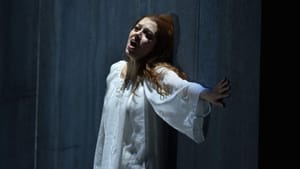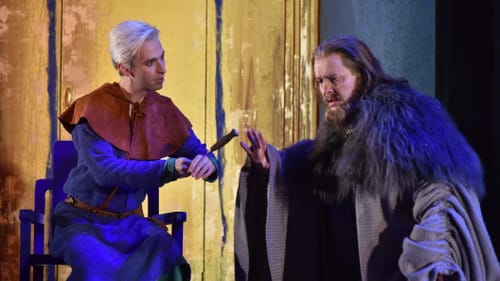Stay in the Loop
BSR publishes on a weekly schedule, with an email newsletter every Wednesday and Thursday morning. There’s no paywall, and subscribing is always free.
Drawn together
Opera Philadelphia's presents George Benjamin and Martin Crimp's 'Written on Skin'

Opera Philadelphia continues its admirable exploration of the contemporary repertory with the first original U.S. staging of Written on Skin. George Benjamin and Martin Crimp’s 2012 opera, a hit in London and at the Aix-en-Provence Festival, blends surreal storytelling with daringly dense musical language. In short, it’s a risk for a company whose patrons may prefer the bread-and-butter staples on which they were raised.
But high risk can generate high reward, and in that respect, William Kerley’s fascinating production pays dividends. With austere sets, costumes by Tom Rogers, and painterly lighting by Howard Hudson, Kerley honors the strange duality at the heart of this brief, gripping work. He captures not only the shocking violence that has made it somewhat controversial but the beauty that underpins it.
At its most basic, Written on Skin explores how the creation of art can have disruptive consequences. In Medieval France, a wealthy landowner called the Protector (baritone Mark Stone) hires a troubadour (countertenor Anthony Roth Costanzo) to make an illuminated book in praise of him. The opera’s title refers to the practice of fashioning parchment out of treated animal skins, a fact that furthers the interwoven beauty and brutality permeating the work.
Boy meets girl
Referred to only as the Boy, the troubadour’s presence rouses a sense of longing in Agnès (soprano Lauren Snouffer), the Protector’s young wife. Although she cannot read, she becomes captivated by the colorful illustrations that punctuate the Boy’s text. “What else can you invent?” she asks him, as Benjamin’s jagged instrumentation suggests a sudden and unwelcome sexual awakening.
Rogers’s set design takes the form of an illustrated book, as a hulking crate placed center stage opens to reveal intricately realized scenes from the Protector’s estate. Hudson’s lighting helps realize the overall effect, as simple objects and structures become awash in color. Medieval-styled costumes firmly ground the characters in the period, while also suggesting individual traits — the Boy’s colorful tunic and leggings contrast the Protector’s drab, respectable robes.
I initially wondered if so much literalism might hurt what is clearly meant to be a highly speculative work. After all, the text also includes a frame narrative in which three angels — sung by Costanzo, tenor Alasdair Kent, and mezzo-soprano Krisztina Szabó — manipulate the central trio for their own theatrical entertainment. Perhaps my thinking was influenced by Katie Mitchell’s arrestingly abstract original production, which can be seen on DVD.

But Kerley’s vision quickly produces an overwhelming effect that seamlessly couples with Benjamin’s intriguing and surprising score. Jarringly discursive passages give way to sustained melodies with a clear harmonic purpose. Music director Corrado Rovaris conducts with a welcome sense of forward momentum that locates most of the score’s wonderful intricacies.
Shock and awe
Benjamin’s use of unusual instruments — including mandolin, viola da gamba, and glass harmonica — furthers the feeling of an eerie world that somehow exists outside of time. This results in a familiar but appropriately unsettling musical and dramatic landscape.
The soloists extend these elements to their performances, and Opera Philadelphia’s cast excels. Stone’s richly expressive baritone contains such warmth that when he turns suddenly and destructively violent, it is genuinely shocking. He acts the Protector not as a purely hateful brute but as a conflicted, tortured man.
Agnès requires a soprano who can communicate sensuality and anguish, often in the same breath. Snouffer meets that challenge with aplomb. She partners beautifully with Costanzo, whose ethereal qualities ideally complement his not-fully-human character. However, his voice can sound frustratingly unsupported near the lower end of its range.
I won’t reveal the opera’s gruesome denouement, which can only properly shock if it comes as a surprise. But I can wholeheartedly recommend Written on Skin. Although Benjamin and Crimp punctuate the opera itself with acts of horror, the opportunity to experience a contemporary masterpiece in Philadelphia should be a cause for joy.
What, When, Where
Written on Skin. By George Benjamin and Martin Crimp, Corrado Rovaris conducted, William Kerley directed. Opera Philadelphia. Through February 18, 2018, at the Academy of Music, 240 S. Broad Street, Philadelphia. (215) 732-8400 or operaphila.org.
Sign up for our newsletter
All of the week's new articles, all in one place. Sign up for the free weekly BSR newsletters, and don't miss a conversation.

 Cameron Kelsall
Cameron Kelsall